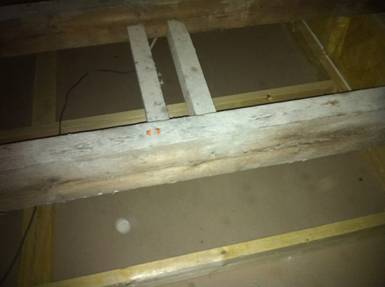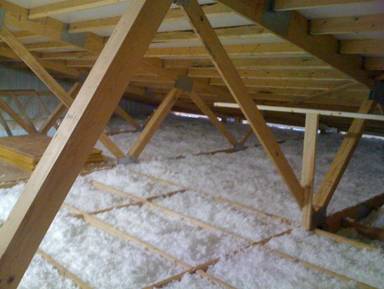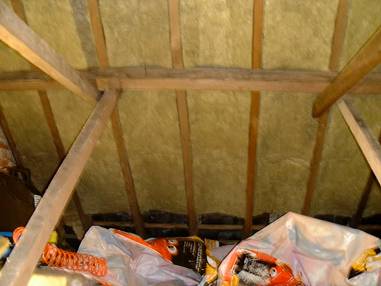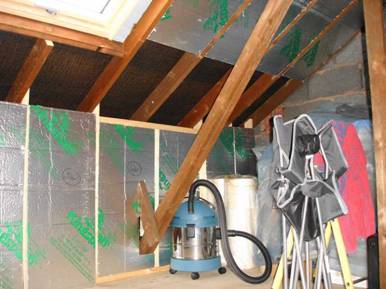How to chose between different Loft insulation materials?
Loft insulation guide
Proper loft insulation could save between 25% - 30% of energy lose in your home.

Loft without insulation
These insulation materials keep the cool air from escaping during summer and heat during the winter. For loft insulation, you can use a range of materials depending on the particular situation and your preference. Making a comparison between different insulation materials will help you to decide which of them are best suited for your needs. However, there are a number of materials that you can choose from.
What to look for?
First off all look at the R-Value of various insulation products you want to install at your home. The R-value is a measure of thermal resistance used in buildings. Insulation materials with higher R value will be more efficient in preventing heat transfer. For example, at temperatures below -18°C fiberglass and cellulose based insulation materials lose their effectiveness. Greater efficiency at such low temperatures show materials similar to rock wool. On manufacturer's specification you can see at witch temperatures certain insulation materials have better efficiency.

Blow In loft insulation
You should purchase insulation products bearing in mind the temperature conditions and the microclimate in your local area. Also, you need to take into account the installation procedures of different types of insulation products. Some types of installation materials are easy to install and do not necessarily require professional help, but other products are not designed for a DIY work.
On the market you can find lots of insulation materials for your loft. There are several basic types of loft insulation. The mostly used type of loft insulation is glass or rock wool and rigid insulation boards. Glass wool is made in slabs or rolls of different thermal and mechanical properties. Rock wool has excellent properties in blocking sound and heat. Rock wool is also produced in slabs or rolls and is mostly used in construction and industrial facilities.

Rock wool insulation
Rigid insulation material is available in boards of different sizes made of polystyrene or polyurethane. It keeps warm or cold air from penetrating the walls improving the overall energy efficiency of the building. There are three most common types of rigid insulation boards: PIR (polyisocyanurate) boards, phenolic insulation boards (fire resistant phenolic foam boards) and polystyrene insulation boards.

PIR Board loft insulation
Finally, you may also want to think about the other characteristics of insulation materials, like fire resistance and its ability to deal with moisture.
If you found this article to be helpful, please share it with your friends on Twitter, Facebook and Google+. If you have any questions or comments feel free to write them in the comment section below, I will respond to all of them.




















































































































